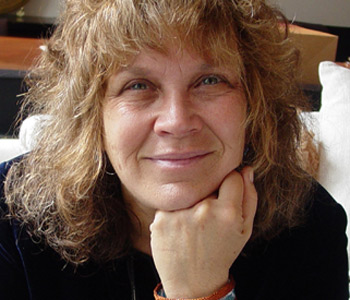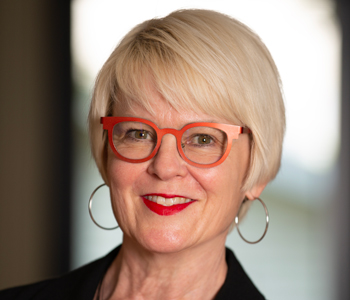Lazreg, Marnia
Questioning the Veil: Open Letters to Muslim Women
Princeton University Press
184 pages, 5 1/2 x 8 1/2 inches
ISBN 978 0691138183
This book started out as a reflection on why it is that in the past two decades a re-veiling trend has swept over the Muslim world and Muslim communities in Europe and North America. I set out to examine four most commonly cited arguments given by women for donning a hijab—a term I use interchangeably with the generic veil—and offer reasons for which they should not wear one.
I draw on my personal experiences growing up in a predominantly Muslim society, supplemented by interviews and discussions I have had over the years, principally in Algeria and the United States, with women who have either resumed wearing a hijab or started wearing it for the first time. I look into the logical consistency of arguments in favor of veiling and explain how they need to be replaced in their socio-political as well as geopolitical contexts in order to understand their meanings. When this is done, it becomes clear that what appears as a personal decision to wear a hijab is in fact contingent upon the interplay of outside forces that include militant religious male figures, states that mandate the hijab, states that hound women in hijab, or diffuse anti-Muslim prejudice in some Western societies.
When viewed in context, the most frequently cited arguments, namely conviction or piety, modesty, protection from sexual harassment, and the need to assert a Muslim identity, appear to be more mundane than faith-induced. For, even religious conviction, when contextualized, is less compelling as an argument for wearing a hijab since it too is inflected by outside forces. In questioning justifications of veiling, my goal is to show that although veiling is presented as a religious requirement, it is worn for a variety of reasons that generally have little bearing on religion as such.
My hope is that the reader approaches this book as a reflection by a concerned woman on the necessity to depoliticize the veil, question the justifications that are usually advanced for making it palatable, examine its role in sustaining deep-seated and prejudiced conceptions of women (whether conscious or unconscious), develop awareness of its impact on the girl child’s perception of her body, and realize that the decision to wear a veil made by one woman also involves other women who may find it more difficult to refuse to follow suit.
The veil is not an innocent custom that one adopts without concern for its social and psychological implications for women. It has a layered history of gender inequality, just as it is imbued with multiple meanings. The decision by one woman to wear it summons up that history, but also prevents a woman from having control over which of its symbolic meanings she wishes to convey: Is she wearing it to display piety? Is she wearing it because a religious figure told her it was her duty to do so? Is she wearing it as protest against its prohibition by a state? Is she wearing it because her fiancé wants her to? The veil stands for all these meanings and more. It controls a woman instead of being controlled by her; it defeats her power to choose.

Donning the hijab in one country has effects on women in another country. A woman who opts for the hijab in Algiers makes it more difficult for a woman in Saudi Arabia or Iran to question the veil that she is obligated to wear by law.
In the past I wrote books that were historical in nature in so far as they relied on archival research or on existing historical research; I focused on structural rather than existential issues. This book is not written from a narrowly defined academic perspective. I weave personal experiences with interviews of women in order to provide in-depth social analysis. I present a phenomenological interpretation of the turn to veiling that enables the reader to enter the “subjective” side of veiling that is, the manner in which motives for veiling are constructed, experienced and talked about by a small group of women.
In this sense, I am “in” this book more than I was in my previous books. I needed to put myself in it because veiling concerns me as a woman who grew up in a society where veiling was unquestionable, and is now witnessing a return to that time. The current veiling trend has had the effect of erasing, or at least concealing, the intervening period of time, between my coming of age, which coincided with the independence of Algeria in 1962, where I was born—a time when younger women no longer felt compelled to wear a veil—and the present when young women take up veiling as do others throughout the Muslim world.
Unlike studies that interpret (re)-veiling as a form of protest against allegedly failed “modernization” policies adopted by Middle Eastern states in the 1960s and 1970s, or hail it as ushering in a new form of modernity, I focus on how women re-construct justifications of their turn to the veil, and present them as their own.
There is a tendency to romanticize veiling, and see in it what is not there, especially if the writer does not belong to a culture in which veiling is common. Some American women think of veiling as an alternative to dressing up or having to do up one’s hair. A veil is hardly “liberating” as some women have claimed—unless you equate liberation with placating a father, a husband, brother or the community at large. It is the compulsion that a woman may feel to wear a hijab, no matter for what purpose, that needs to be thoroughly examined.
Against this background, I decided to write this book and show that whether formulated by advocates of veiling or by researchers eager to be culturally-sensitive—but end up being relativists in a dubious sense—justifications of veiling miss an important point: donning the hijab in one country has effects on women in another country. A woman who opts for the hijab in Algiers makes it more difficult for a woman in Saudi Arabia or Iran to question the veil that she is obligated to wear by law. The apparently “free” decision made by the woman in Algiers, prevents the Saudi or Iranian woman from wishing to be free of the veil; it strengthens the Saudi or Iranian censors’ conviction that all Muslim women wear or should wear a hijab.
This principle of existential philosophy is enormously important in understanding that a woman’s “choice” of the veil is constrained in two ways: in being a response to an existing local situation, and in involving the life circumstances of other women.
In my view, veiling is a discourse as well as a history. As discourse, the veil is a manner of thinking about women, speaking and writing about them and their behavior. As history, it is a configuration of laws and practices that have been common to women throughout the Muslim world. Consequently, a woman’s “choice” to wear a veil re-inscribes her into that history just as it also re-inscribes other women me in it. And this was not a history of gender equality—it could not have been—or of freedom of deportment.
I would want a reader who browses through my book to read pages 4 and 5 because they show in vivid terms the perils of thinking that veiling is faith in action. In reality, veiling can harm a woman in a situation of crisis.
I would also like a reader to leaf though pages 78-87, which recount the story of a young woman who took up the hijab out of conviction. However, in the end it is superstition that played a determining role in her choice. This illustrates the contingent character of “agency,” usually invoked by writers when they argue that women who decide to wear a hijab are exercising their “agency.” Although no one forced this woman to don the hijab, her agency was shaped by family, community and education. She read books that reinforced her faith, gravitated towards like-minded youth, and finally joined her female relatives in donning the hijab.
Browsing through pages 112-123 provides insight into the role played by the “west” in the organized network of advocates of veiling. Male advocates flaunt the veil as an alternative to the manner of dressing of some Western women. At the same time, they obviate a discussion of how the “west” has affected the manner of dressing of Muslim men. These pages also reveal the role played by a new generation of imams in Europe in redefining the hijab as an essential aspect of the identity of young second generation immigrant women.
On page 128, I make the case for the non-reducibility of Islam to the veil.

Male advocates flaunt the veil as an alternative to the manner of dressing of some Western women.At the same time,they obviate a discussion of how the “west” has affected the manner of dressing of Muslim men.
It is my hope that this book will open up a space for discussing the issue of veiling without reticence or fear in spite of the very difficult times that a number of Muslim countries are facing.
Some women may feel that this is not the right time to question veiling, that there are “more important” things to grapple with, such as counterinsurgency wars in Afghanistan and recently in Iraq, looming war in Pakistan, the Palestinian issue, displaced people, increasing poverty etc.
The reality and importance of these issues is beyond doubt. However, the resurgence of veiling among women of all age groups across the Muslim world also needs to be addressed now. This is so because veiling is linked to other forms of gender inequality that become aggravated in periods of crisis.
Furthermore, there are organized networks of advocates of veiling who, oblivious to the grave issues facing their societies, choose to invest time and energy in redefining women’s identity. I wish that one of the outcomes of this book would be for women to demystify the various veil justifications, and realize that as long as governments mandate or prohibit veiling, as long as imams preach about the virtues of veiling, as long as the veil is endowed with multiple meanings, a woman may never know whether the decision she has taken to veil herself is truly free.




We don't put paywalls. We don't distract you with ads. We don't sell your data.
Please help to keep this running!